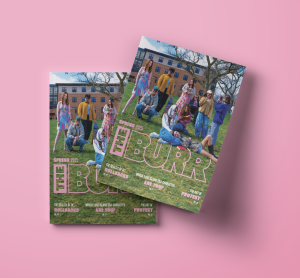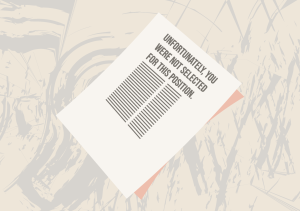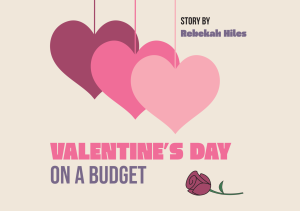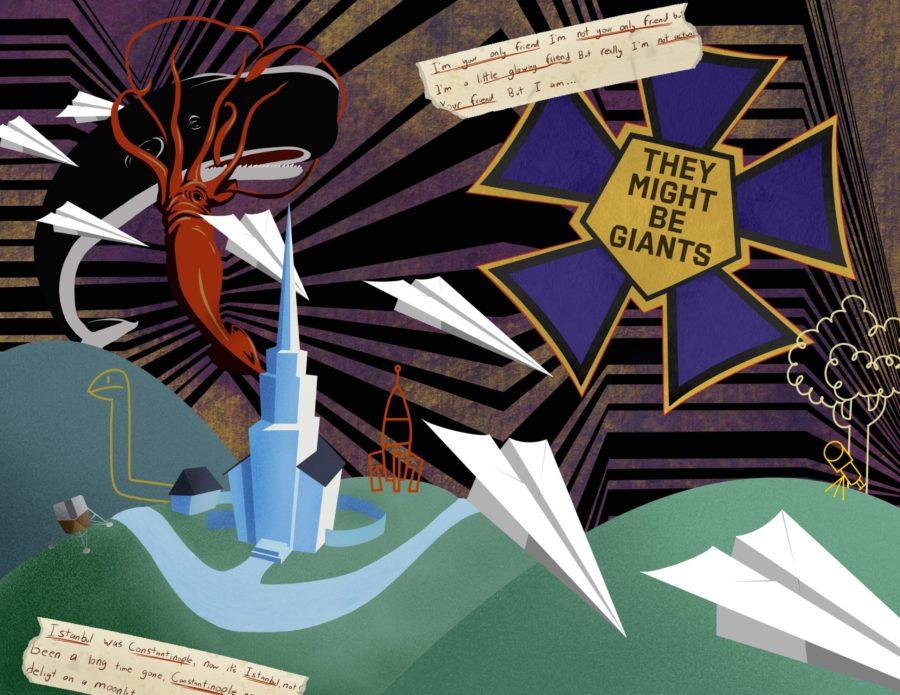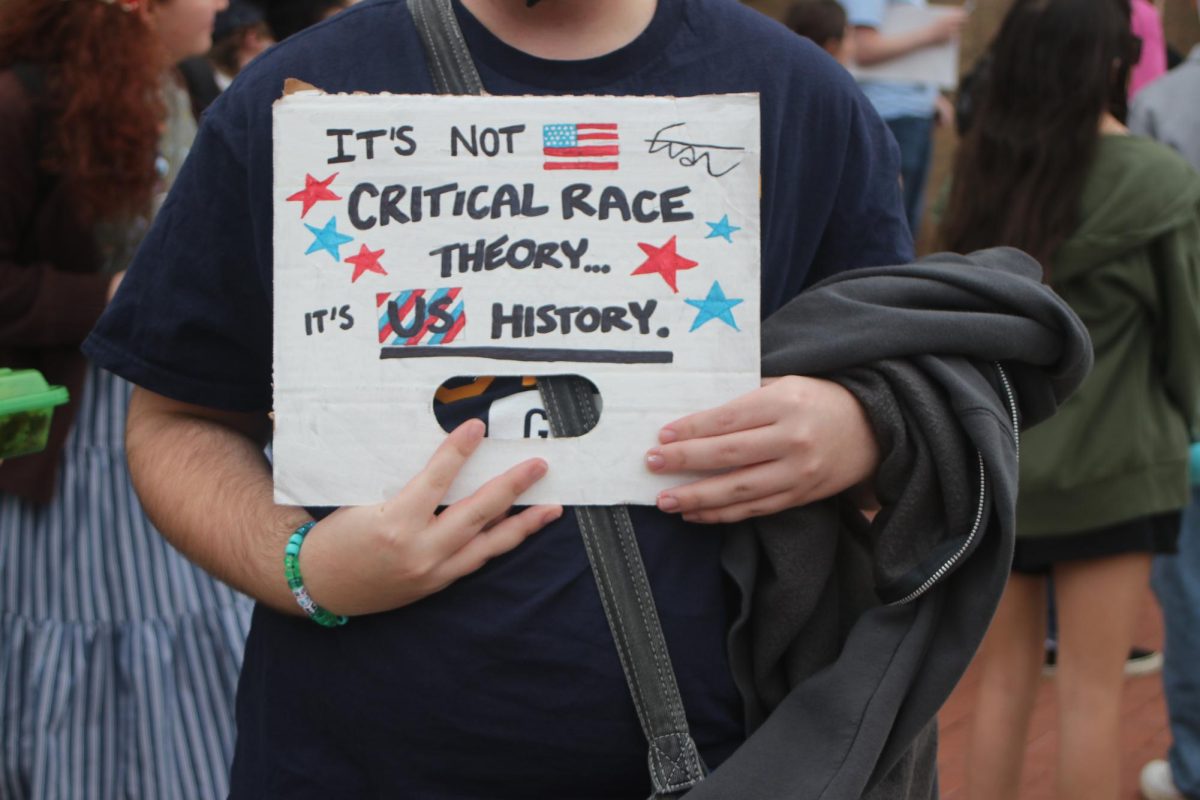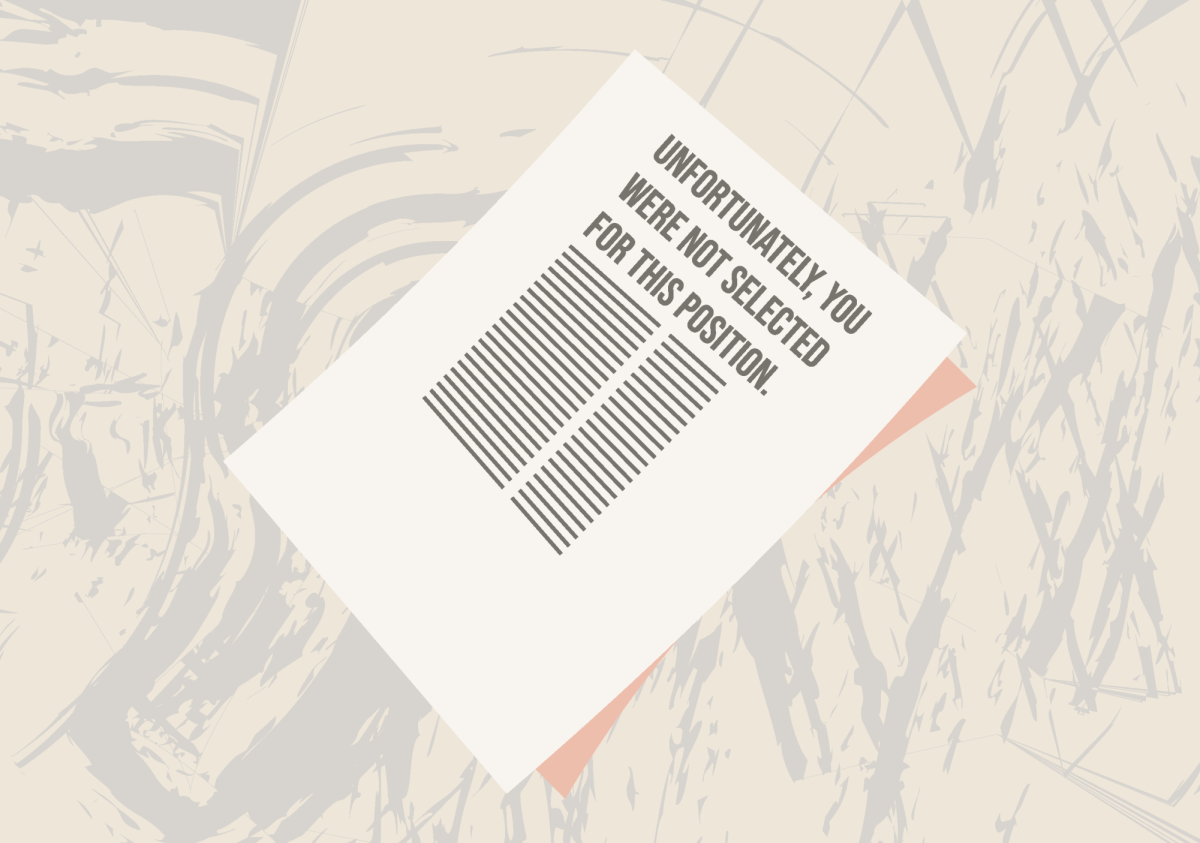Illustration By Preston Randall
As someone whose formative years were in the ‘00s, I did not realize how much influence one band, in particular, had on the different pockets of pop culture I was surrounded by growing up: the Brooklyn group, They Might Be Giants.
From “Coraline,” “Mickey Mouse Clubhouse,” “The Daily Show” and even the obscure Disney show “Higglytown Heroes,” they are everywhere in my memories from growing up. Similar to Ween and Danny Elfman of Oingo Boingo, They Might Be Giants fell into a specific category of the ‘80s and ‘90s art-rock that fit perfectly within Gen-X-created media for children. Even still, They Might Be Giants stuck out harshly when put next to the rest of the lot.
With my interest piqued, I quickly fell into a two-month period of delving deep into the group. The media helped me catch up with the 30-year history that preceded my introduction with podcasts about the group — three to be exact.
Starting in 1982, They Might Be Giants, composed of John Flansburgh and John Linnell, began recording short songs together. Then, according to the legend, Flansburgh’s apartment was robbed, and Linnell broke his wrist in a bike accident, forcing the duo to stop performing for a short time. Instead of losing momentum, they struck brilliance. Using tapes of songs they were working on, Flansburgh purchased an answering machine, placed an ad in The Village Voice, and created “Dial-a-Song,” a service where someone could call a phone number and hear the band’s music. This unique experience, which seems normal in our streaming environment, was kept up until 2006 but has been revived numerous times since.
The wide world outside of New York City got its first glimpse of the duo in 1986, when their first video, “Put Your Hand Inside The Puppet Head,” aired on the then-new MTV program “120 Minutes,” a common platform of exposure for up and coming artists.
After releasing their first two records with independent label Bar/None, the duo signed with Elektra Records in 1989. In 1990, they released their most well-known album, “Flood,” which would collect new fans from across the globe for the mighty duo. Two songs off the record, a cover of “Istanbul (Not Constantinople)” and “Particle Man,” were chosen for a music-centric episode of “Tiny Toons Adventures.” They would eventually form a larger backing band and release “John Henry” and “Factory Showroom” before departing from Elektra in 1996. They then had a string of hits for movies, television shows, and numerous songs for advertisements ( including a successful Dunkin’ Donuts campaign in the mid-’00s. )
Their early videos, shot by director Adam Bernstein, were rough around the edges production-wise with an idiosyncratic charm. In videos like “Ana Ng,” “Purple Toupee” and “Don’t Let’s Start,” the duo moved in an erratic and jerky fashion that made them look like a pair of turn of the century automatons when the footage was sped up for the final video, making a persistent impression on viewers.
The music as well had infectious melodies with an oft-kilter quality — not too bizarre to scare off new listeners but also not too general to fit within the normal music rotation. The lyrics, which have countless descriptions (obtuse, existential, darkly-funny, etc.) and vague messages interlaced with them, making it easy for anybody to identify or tie them within their own life or personalities. Their live shows were amazing musical chops, married a crotchety yet comedic stage presence, and made fans come back countless times. The way they interact with their devoted fans is unique as well, keeping such close contact with the fanbase after decades. One example is creating Instant Fan Club (IFC), an exclusive club where the group releases content and merchandise to members, to support themselves and give something special back to the fans.
What most fans flock to, however, is the mythic and storied relationship between the Johns, both in their songwriting process, promotion, art direction, and even just the way they interact with each other; it is farcical yet artistic and wholly idiosyncratic. It usually falls into this dichotomy. Linnell provides quips, the more oft-kilter melodic compositions, and narrowly focused funny-but-dark lyrics. Flansburgh is the mouthpiece for the band, taking a more experimental yet anthemic approach with the majority of his compositions accompanied by more human-condition-related stories, usually from perspectives of people who can only be described as bastards. Obviously, these are not lines that are hardened into the band’s discography. Linnell penned many avant-garde arrangements, and Flansburgh wrote “Boss of Me,” which won them their first Grammy. They Might Be Giants is truly a force of their own and lightning in a bottle that has been erupting for nearly four decades now.
This still does not explain, however, the level of discussion They Might Be Giants have brought up; it also does not explain what made five different people make three individually unique podcasts about the same band. Surely, the territory would have been well worn at this point. They Might Be Giants pose a very interesting case, writing unique songs that bewilder the listener without turning them away.
The vagueness with which Flansburgh and Linnell approach interpretations of their songs, as well as the broad and existential subject matters, has left the songs open to some interesting readings.
This resulted in three different shows putting some of the pieces together, and while they do not try to paint a picture, they try to assemble some to lead the listener into making a picture of their own.
“Giants Confirmed”
Chronologically the first of the They Might Be Giants focused shows is “Giants Confirmed,” with their first episode released in July of 2018. It is the easiest show for newcomers to start with as long-time fan, Matt Rebeiro, and newer fan, Trevor Ikrath, go through the group’s studio releases track-by-track. They usually pull out some interpretations of songs without exclusively delving into readings, mostly just reviewing and discussing the tracks. The internet played a big hand in Rebeiro and Ikrath’s first experiences with They Might Be Giants.
“I would say I initially got into their music via one of my friends giving me a compilation back when I was in high school or middle school,” Ikrath says. “It was [the compilation album] “The User’s Guide” [to They Might Be Giants], but I got into the band itself on a deeper level once I discovered This Might be a Wiki, the online database of lyrics, trivia, and histories of all their songs.”
This Might Be a Wiki, started in 2003 by fans Scott Redd and Brad Will, is an across-the-board, hefty and exhaustive archive of They Might Be Giants. It is an archeological dig of a website; it is difficult to pinpoint the exact extent of They Might Be Giants’ wealth of material (old songs released exclusively to Dial-a-Song are still being found), but the Wiki currently has 910 songs logged. Members of the site can rate each of these songs as well as share their interpretations of what they assume the lyrics to mean. The Wiki also has the dates and setlists for concerts logged back to 1983, although the setlists are not steadily recorded until about 1990. The Wiki is a gripping hole to slip into. It is one of the most extensive recorded histories of any band. Even They Might Be Giants use it to see what they played when they visited a city last to see what to play next time they come back.
Matt Rebeiro also discovered fans of They Might Be Giants while browsing through groups focused on other musicians he was into.
“For me, I was on a fan forum for the band Lemon Demon. Neil Ciceriga, the guy who made ‘The Ultimate Showdown,’ ‘Potter Puppet Pals,’ ‘BRODYQUEST,’ a lot of really seminal web videos,” Rebeiro says. “Basically everyone on the forum already listened to them. My first They Might Be Giants CD was [also] ‘User’s Guide.’ Then from there, I ended up grabbing all the other albums eventually.”
Ikrath was the one who initially came up with the concept to do a podcast about They Might Be Giants since a new fan and a veteran fan could bring an interesting balance to the show. With each episode, the duo takes a dive into each of the albums track-by-track, rolling through them
Since “Giants Confirmed” does not take as deep of a dive as some of the other shows, their research into each episode is a bit less obsessive. Ikrath tends to dig a bit deeper into the Wiki to study whatever songs they will be covering, and Reberio taking a bit more of a reliving a memory approach and refreshing himself on the album for the episode.
However, the two still do love the band’s seemingly infinite archive, constant musical experimentation, and lyrical complexities.
“They’re kind of all over the place stylistically, but I feel like lyrically, they’re always on some weird postmodern shit,” Rebeiro says. “It’s really a band that encourages that kind of archival listening. Not only just because they’ve been around for so long but because they’d have so many alternate routes of material, like Dial-a-Song.”
Riberio and Ikrath brush upon the wells beneath many of the group’s material, but overall keep it easily accessible no matter how familiar a listener could be with the material.
“This Might Be a Podcast”
The second show, “This Might Be A Podcast,” started not long after “Giants Confirmed,” in November of 2018. Hosted by musician and music teacher Greg Simpson on Punknews.org, his approach is more fan-focused and Socratic-seminar-Esque, digging deeper into interpretations of the lyrics. In each episode, Simpson sits down with a guest who chooses the song they deep dive into.
Simpson’s first encounter with They Might Be Giants was hearing the opening track off the group’s fourth album, “Apollo 18,” entitled “Dig My Grave,” which is a unique Flansburgh-penned track.
“I was really into a lot of skate punk and stuff like that,” Simpson says. “That first track just right away, one of the most punk They Might Be Giants tracks there is and I was hooked. (…) In general, I was like, this is kind of odd, but I’m [also] kind of odd. (…) There’s something to these lyrics here. It’s a little more than most of this punk stuff I listened to. The songs [on the rest of the album] completely change styles, and [the album] gets [progressively] more poppy, and I’m like, there’s a lot going on here.”
With “This Might Be A Podcast,” Simpson loves the rambles and tangents he and his guests often go down. Even though Simpson and the guest spend (sometimes) hours breaking down one song, solving the puzzle is not the point. Simpson started the show after noticing a trend of song-by-song podcasts for other groups, like Blink-128 and Relient K. He was left wondering why there was not one for They Might Be Giants.
“If it’s a big enough band, you’ll find a song-by-song podcast,” Simpson says. “I thought it sounded like a fun idea, and it’s a band that I thought was especially good for this. [Since] every song is different and there are two main songwriters, there’ve been a lot of different eras and band members in and out of They Might Be Giants. There’s just a lot of stuff to talk about.”
Simpson, who is a self-proclaimed agent in the tangents, turns the unique interpretations brought in by the guests into conversations that cover many topics, related and unrelated from the song at hand. Simpson does like to keep these readings separated from those chronicled and documented online.
“The interpretations tab on the Wiki is very tempting,” Simpson says. “I always make sure I have my own interpretation thought out before. If I do click over to it, lots of times it’ll be like my guests will bring them up or it’ll be like let’s just click over here and see real quick if anything good for a laugh here or see if anyone can corroborate our opinions on whatever this might mean.”
Simpson also talks about how since the band is so stylistically all over the place, it is hard to describe.
“If someone was like, ‘Write a song that sounds like They Might Be Giants,’” Simpson says, “I’d be like ‘I don’t know what that means.’ I know the band so well, but I can’t encapsulate them in one song.”
That is usually one issue all the shows struggle with. They are trying not to put words within the mouths of the duo as to what the songs are about. Linnell and Flansburgh are notorious for purposely saying incorrect interpretations (as well as messing with interviewers) which can create a muddy area if fans feel necessary to nail down what they’re talking about. There are also so many archives to dig through and allusions that may or may not have been intentional.
“Don’t Let’s Start: A Podcast About They Might Be Giants”
The third show, the most detail-oriented and history-based out of the lot, attempts to grab all the pieces involved with a song to make some sense of the information overload.
“Don’t Let’s Start: A Podcast About They Might Be Giants” started in late 2018 and is hosted by veteran fans, musicians (and friends) Jordan Cooper and Dave Fox. They bring their decades of time with the band to the podcast. Like everybody else previously mentioned, solving the puzzle with the breadcrumbs left in each song is not the focus. They instead have two goals: layout a map of each song and pin audio clips, reference points, and allusions made by the Johns to create a cohesive history of the song that can lead listeners to the well to fall down with their interpretations.
Cooper is perhaps the most dedicated fan of all. After getting into the band at 14, much like anybody obsessed with anything at that age, he wanted to share it with everybody, including Fox.
“I kinda came from a different background, more like punk rock or metal,” Fox says. “Jordan and our friend Daniel were the ones that were playing They Might Be Giants on a loop over and over and over again. So it just kind of got absorbed into me slowly over time, and then something just clicked in my head where I just really fell in love with it.”
Cooper, however, became quickly entrenched in the oeuvre of the group, singing the songs involuntarily, writing the lyrics across school notes, and even learning how to play the accordion like Linnell.
“I knew what it was like to be a fan of a cartoon show,” Cooper says. “But They Might Be Giants was the first time where I became obsessed with personalities that made an artistic thing … I could read millions of interviews with them and watch all the music videos and obsess over the things I spot that keep coming back in the videos and lyrics.”
The importance of the They Might Be Giants live experiences is most present with “Don’t Let’s Start: A Podcast About They Might Be Giants,” with Cooper having seen the group over 40 times since the late ‘90s and Fox an estimated 20 times since then as well. The live show component is extremely present in each episode, as Cooper has an archive of concerts helped by other fans online and tries to implement that within each discussion by slowly combing through the shows, noting relevant quotes and notable performances.
“The reason I’m more interested in seeing them multiple times is because each show really is very different,” Fox says. “I’d say they have a good habit of trying to make things interesting each time and kind of realizing each person’s show is their first show.”
Along with immersion of the broad, They Might Be Giants live experience, Cooper and Fox create an interesting auditory collage of each song. The song “Particle Man” was one that came up in our discussion; while not the favorite of the two, Cooper still tried to show different performances and ways that They Might Be Giants altered the song to keep it interesting.
“I see why it’s not just some popular song of theirs; it’s seminal. It’s as much of their philosophy about life and things as any other song,” Cooper says. “The songs I picked for the very end [of the episodes] I’m always trying to say something with it in a way, and for that one, this is Linnell laughing, playing ‘Particle Man,’ messing up and laughing. The point to me was the fact that they can play the song 80,000 times and still have joy while they do it. It was amazing to me, because that’s something very special.”
All five hosts have different reasons for why They Might Be Giants is such a cherished group. For Simpson, Cooper and Fox, all of whom are musicians in vastly different genres, it made them all appreciate the way the songs are constructed, how many amazing songs can be written between two people and made them realize how many ways a song could be written. Most importantly, all the hosts want to showcase their enduring love for a band that is entirely indescribable in simple terms.
“You just hear it on the surface,” Simpson says. “ And you’re like ‘This band is just silly, these are novelty songs or whatever.’ [But] we know that there’s more behind it. (…) There’s the elementary kind of a sound to that song [the song ‘Shoehorn with Teeth’]. The kind of simple sound offsets those lyrics, and that’s what really is smart about it. There’s so much going on in that song that you could debate with people about. Like, they’ve got all these songs about death and dismemberment, but they sound so happy.”
“When people call They Might Be Giants nerdy, to me, it gives the wrong impression. It misses out that they rock,” Cooper says. “They’re very creative and funny … You know, I could see if there was no Flansburgh in the equation. I could see that Linnell probably [has] more of the ‘nerd’ vibe coming from him, but I think they balance each other well.”
They Might Be Giants, the mystery of them, will never be solved. That is a good thing though. If they did not emanate this fascinating aura, this indefinable chemistry that is kept bubbling and fresh for so long, there would not be such intense devotion and surgical love for them. There would not be three totally different podcasts to discuss three out of countless facets of the group. There would not be anything to talk about other than surface-level musicality and lyrics. Almost 40 years on, They Might Be Giants are still encouraging admiration and dissection.
Special thanks to Jordan Cooper, Dave Fox, Greg Simpson, Matt Rebeiro and Trevor Ikrath.

